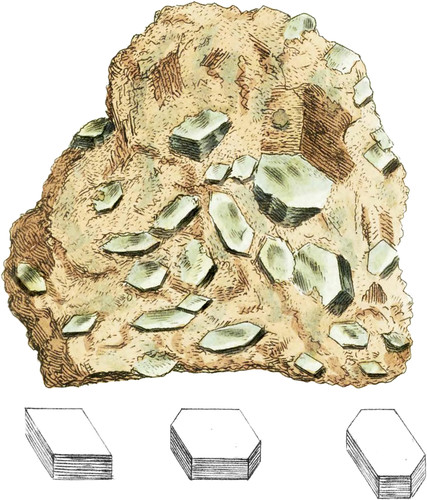 Enlarge
Enlarge
British Mineralogy
Mica
- Gen. 4. Silex.
- Syn.
- Mica, Muscovy Talc. Kirwan, v. 1. 210.
- Mica. Haüy, v. 3. 208.
- Mica membranacea. M. laminosa, &c. Linn. ed. 13. t. 3. 58.
- Glimmer of the Germans.
This specimen differs very little from the Mica from Muscovy, which is occasionally found some feet in diameter. Scotland and Cornwall produce it three or four inches square, or even larger. This kind of Mica is used for lanterns, &c. and is very convenient for ships, as it bears the explosion of cannon without cracking. It is however liable to get scratched, and becomes rather opaque by heat; which opacity is not removed by water. This substance is spoken of as introduced into Home in the time of Seneca to admit light into their apartments ; but Agrlcola considered what was then used as a plaister-stone*, (Sulphate of Lime, tab. 67.) saying that although it was not affected by the heat of summer or cold of winter, yet wet wasted it considerably. These characters confirm his opinion; for we know that Sulphate of Lime is found in France in crystallized masses sufficiently large to form, when split and cut, squares of many inches diameter. The name Talc has been applied to any laminated substance.
Mica analysed by Vauquelin was found to contain:
| Silica | 50.0 |
| Argilla | 35.0 |
| Oxide of Iron | 7.0 |
| Magnesia | 1.35 |
| Lime | 1.33 |
| 94.68 | |
| Loss | 5.32 |
| 100.00 |
- * It seems to have been used in Agricola’s time to shelter plants; in which case it would be much exposed to weather.

